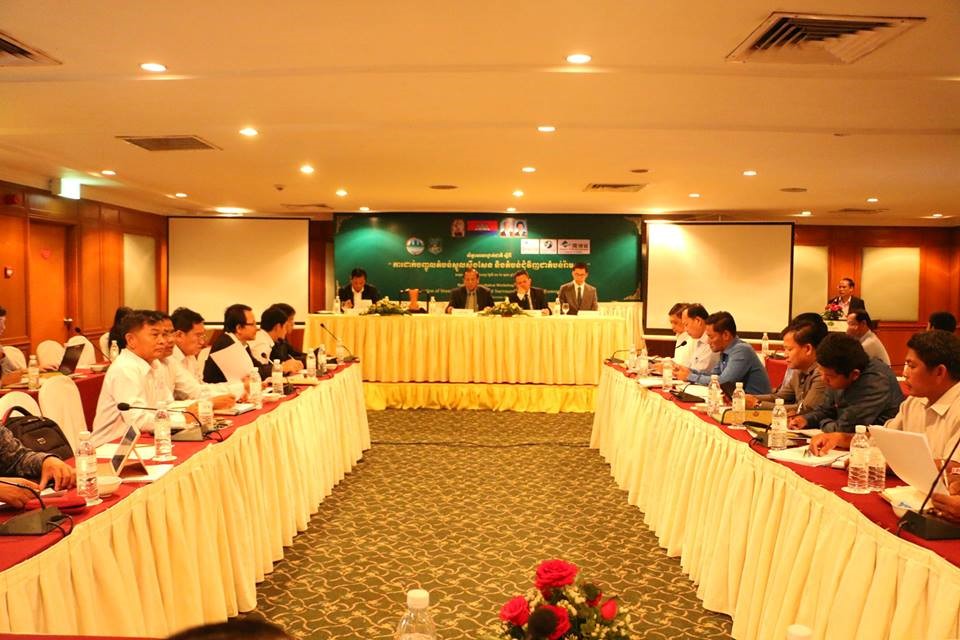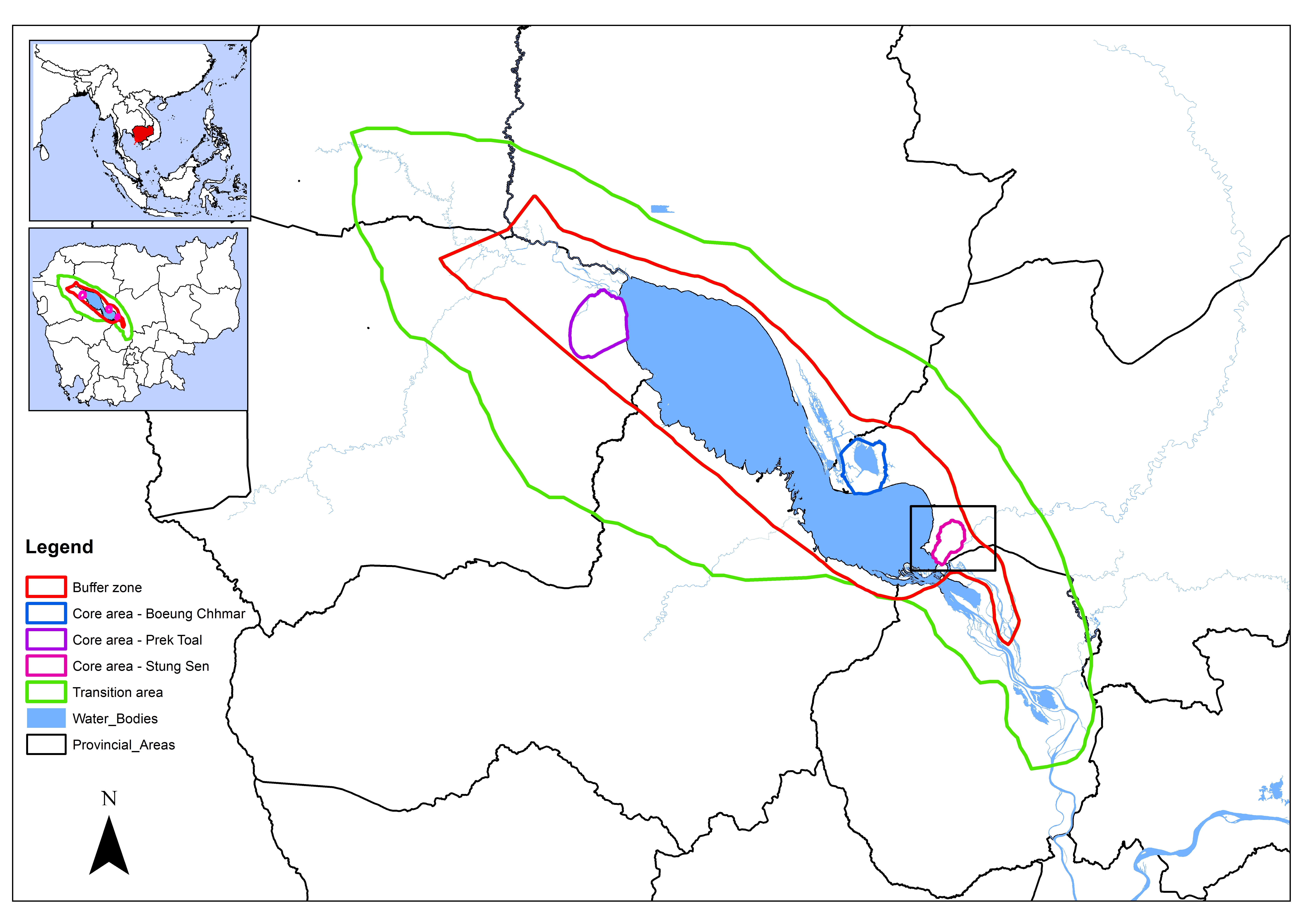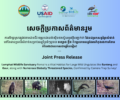NatureLife Cambodia Co-organised National Consultative Workshop
On 31st October 2017, NatureLife Cambodia (NLC) co-organized a national consultative workshop to discuss the conservation status of Stung Sen Core Area and its surrounding areas. The workshop, held at Sunway Hotel, Phnom Penh was participated by local, national authorities as well as other non-profit organisations (NGO), including Cambodia’s Department of Freshwater Wetland Conservation, Ministry of Environment, and BirdLife International Cambodia Programme. Ministry of Environment Japan and BirdLife International Japan kindly provided the financial support.
With efforts from all parties, we reached the consensus to recognise Stung Sen Core Area and its surrounding areas as a Ramsar Site. As of writing of this article, Ministry of Environment is processing to obtain the final approval from Council of Ministers and Prime Minister to complete the designation process.

Governing board member Vorsak Bou (fourth from the left) representing NatureLife Cambodia during the workshop on 31th Oct
Stung Sen Core Area (see the map below) , of an area of 14560 hectares, is a part of the Tonle Sap Biosphere Reserve (TSBR) (WSC Cambodia, 2017). Tonle Sap Lake is the last stronghold of wetland ecosystem in South East Asia. Its rich floodplains and riparian system nourish both Cambodian people and its economy. Its abundant fishery stock makes it one of the top four fishery production areas in the world (Mekong River Commission., 2003), as well as the source of over 70% protein intake of Cambodians (Bonheur & Lane, 2002) . Highly diverse species found in Tonle Sap include Long-tailed Macaque (Macaca fascicularis), Hairy-nose Otter (Lutra sumatrana), Siamese Crocodile (Crocodylus siamesis) and Germain’s Silvered Langur (Trachypithecus germaini). Thus, a total area of 1,483,339 hectares of TSBR was recognised as a UNESCO Biosphere Reserve in 1997, and Stung Sen Core Area offers some of its densest vegetation cover and richest biodiversity.

An overview map of the Tonle Sap wetland area

Tonle Sap is the source of living of many Cambodians ©NatureLife Cambodia 2017
To better protect this area from increasing threats of over-exploitation, BirdLife International designated eleven Important Bird Areas (IBA) around Tonle Sap to protect 225 bird species including Grey-headed Fish Eagle (Ichthyophaga ichthyaetus) and Oriental Darter (Anhinga melanogaster) and 17 of these birds are endangered worldwide, such as Milky Stork (Mycteria cinerea) (BirdLife.org, 2017) .

Tonle Sap is the sanctuary of many important species
For the increasing pressures faced by Tonle Lake ecosystem, NatureLife Cambodia deems it contingent to take further actions to protect this national treasure. We have been working hard to reach out to other stakeholders in promoting its conservation status as a Wetland of International Importance (also known as ‘Ramsar site’). Ramsar site is an internationally recognised conservation area aiming to protect its important ecosystem and natural resources. Thus, NatureLife Cambodia is glad to contribute to this success and believes that this recognition is a powerful step forward for NLC and other conservation parties in advocating sustainable development for Cambodia.

Cambodia Ministry of Environment staffs and NatureLife Cambodia staffs at the workshop
Thus, NatureLife Cambodia is glad to co-organize the national consultative workshop in October and witness this success, which was impossible without hard work from all parties, or support from our passionate donors and partners. We are greatly inspired to continue building a sustainable future for all of us.
Tagged:



